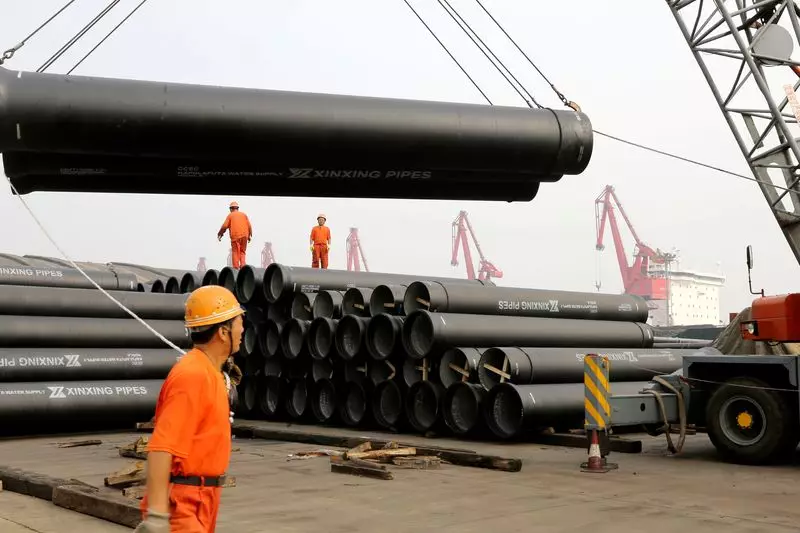In a promising turn of events, China’s manufacturing sector displayed signs of recovery in October, shifting from a period of contraction to modest growth. The latest reading of the Caixin/S&P Global Manufacturing Purchasing Managers’ Index (PMI) climbed to 50.3, up from 49.3 in September, indicating a positive outlook as it surpassed analysts’ predictions of a 49.7 reading. This transition suggests that the sector is experiencing an uptick in new orders, which has been the catalyst for enhanced production capabilities as the country enters the final quarter of the year.
This resurgence is echoed by a recent official survey, marking the first expansion in manufacturing activity since April. The timing coincides with a rollout of government stimulus measures initiated at the end of September, aimed at rejuvenating economic growth towards the ambitious target of 5% for the year. These developments have reiterated the Chinese government’s commitment to stabilizing an economy currently grappling with multifaceted challenges.
Despite this positive data, the road to recovery remains uneven. The specter of a persistent downturn in the property market looms large, compounded by exceptionally low consumer confidence levels. Both challenges are critical in the context of sustaining any form of recovery. Analysts have their eyes set on potential government action to bolster the economy, with reports suggesting a forthcoming new debt issuance exceeding 10 trillion yuan ($1.4 trillion). This financial strategy could provide the necessary fuel to catalyze growth, but its efficacy remains to be seen given the underlying economic pressures.
Moreover, while new orders surged—the fastest rate of increase in four months, stimulating production—it is essential to note the paradoxical trend in employment. Despite improved business activity, factories continued to experience job losses at the highest rate since May. This discrepancy signals a cautious approach by manufacturers, who have opted to reduce temporary staff and refrain from hiring new talent, indicating that confidence in the labor market is still fragile.
Compounding these challenges is the contraction of new export orders for the third consecutive month, notwithstanding a slight easing in decline compared to previous periods. Factors such as geopolitical uncertainties, particularly concerning U.S. trade politics and the upcoming presidential election, are at play, leaving investors wary. The potential for heightened tariffs on Chinese goods under a Republican administration poses additional risks to the export sector, which has been one of the few bright spots in a troubled economic landscape.
As the survey indicates, although input and output prices saw a slight rise, the overall picture remains complex. The balance between rising costs and subdued consumer and export markets creates a precarious situation for manufacturers. Wang Zhe from Caixin Insight Group rightly articulates the ongoing pressures within the labor market and the imperative that economic recovery hinges on a robust resurgence in consumer demand.
While October’s manufacturing data presents a glimmer of hope for China’s economy, stakeholders must remain vigilant. The interplay of revived orders and production growth against a backdrop of labor market instability and export challenges requires nuanced strategies for long-term sustainability. Moving forward, the government’s response in addressing these structural concerns will determine whether the recent uptick marks a significant turning point or merely a temporary reprieve in the ongoing economic saga.

